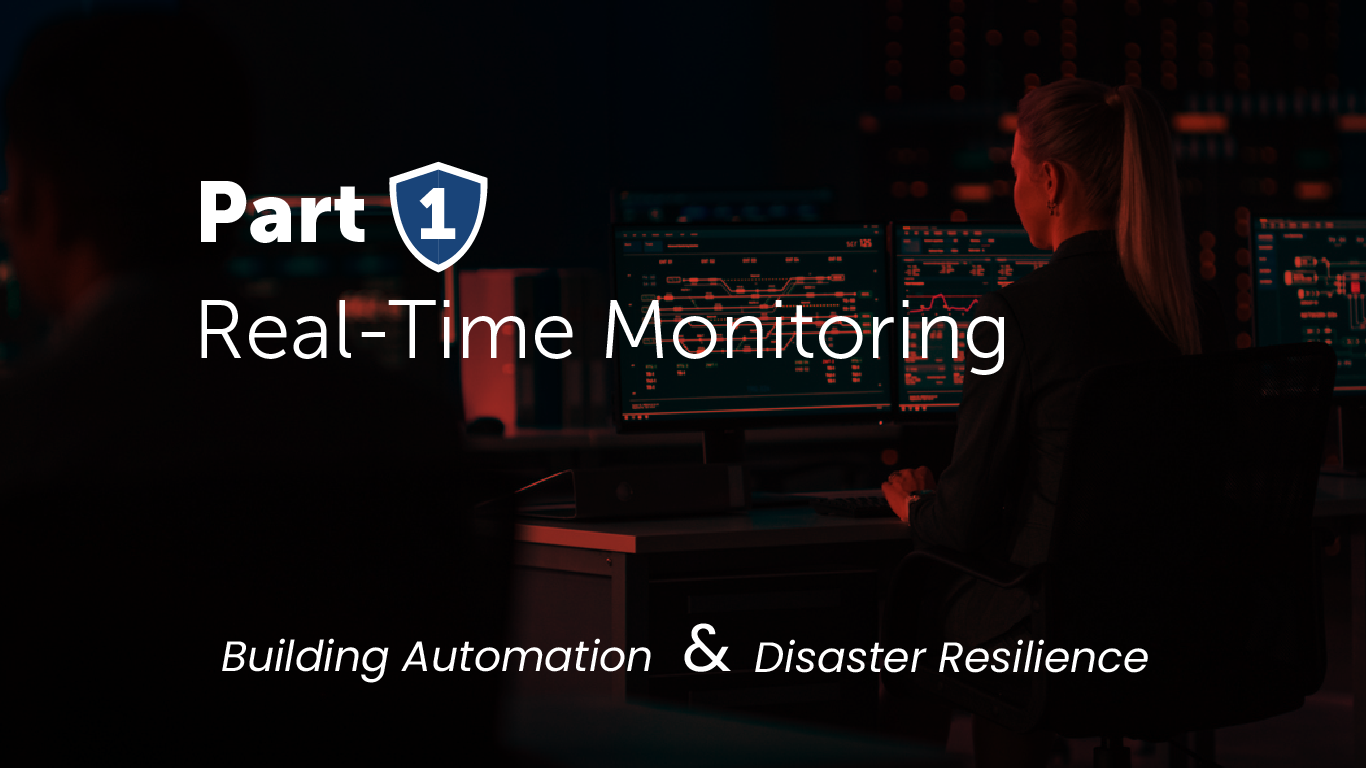The Role of Building Automation in Disaster Resilience (1/3)
The frequency and intensity of natural disasters are only increasing. As facility managers, owners, and engineers, it’s no longer a question of if disaster will strike, but when. That’s why my series, The Role of Building Automation in Disaster Resilience, is more important than ever. By leveraging Building Automation Systems (BAS), facilities can mitigate risk, minimize damage, and protect both property and lives during emergencies.
This topic is vast—there are countless ways that BAS can be used to enhance disaster resilience. To provide a comprehensive understanding, we’ve broken it down into a three-part series. Each article will focus on a specific BAS capability that can help facilities respond to and recover from disasters. From real-time monitoring and emergency lighting to predictive maintenance, this series will equip you with insights on how automation can prepare your facility for the worst.
The Power of Real-Time Data Monitoring
Disasters rarely strike without warning. Whether it’s an impending storm, flood, or earthquake, there are usually signs—rising water levels, shifts in seismic activity, or severe weather alerts. Real-time data monitoring transforms these early indicators into actionable insights. By integrating environmental sensors into a BAS, facilities can gather critical information and make decisions that could prevent millions in damages or, more importantly, save lives.
Imagine having the ability to monitor seismic activity through connected sensors. In an earthquake-prone area, these sensors detect early tremors and communicate directly with your BAS. In a matter of seconds, gas lines can be shut off, elevators paused, and emergency protocols initiated—all before the main tremor hits. It’s the kind of foresight that can dramatically reduce damage and enhance safety.

Flood and Weather Monitoring Integration
Consider the risk of floods, especially in low-lying areas or regions where hurricanes are frequent. Real-time data from nearby rivers, weather reports, and storm surge models can be fed into the BAS, triggering automated actions like deploying flood gates, activating sump pumps, and shutting off vulnerable systems before any water breaches the facility.
Beyond immediate responses, real-time monitoring allows facility managers to create an ongoing disaster readiness plan. By using historical data collected over time—such as temperature trends, weather conditions, and equipment performance—BAS platforms can help predict potential risks and prepare the facility long before disaster strikes.
Automation Equals Speed and Precision
In a disaster scenario, human response times can be delayed by panic, confusion, or simply a lack of real-time information. Building automation, however, functions without hesitation. A connected BAS can be set to respond instantly, making decisions based on pre-set parameters and real-time data to minimize damage and protect occupants.
For example, in the case of a rapidly advancing wildfire, automated window shutters can close, HVAC systems can shut down to prevent smoke infiltration, and real-time data from surrounding weather stations can help facility managers assess the safest course of action for evacuations.
Scalability Across Different Facilities
The versatility of real-time monitoring is one of its biggest advantages. Whether it’s a small commercial building or a sprawling industrial complex, a BAS can be scaled to monitor key indicators for that specific facility’s unique risks. An industrial facility might focus on seismic sensors and chemical leak monitors, while a coastal office building may prioritize flood and wind-speed data.
The flexibility to customize monitoring systems ensures that every building is prepared for the specific threats it faces, making BAS a tailored solution rather than a one-size-fits-all.
Conclusion: Staying One Step Ahead
As climate change accelerates the frequency and intensity of natural disasters, having real-time data monitoring integrated into your building automation system is essential for resilience. From earthquakes to floods, BAS can ensure that facilities respond faster than ever before—saving time, money, and lives.
Next in the Series: In the next article, we’ll explore how smart emergency lighting systems can guide people to safety during disasters and help facilities conserve resources under duress. [Read Part 2 Here].

